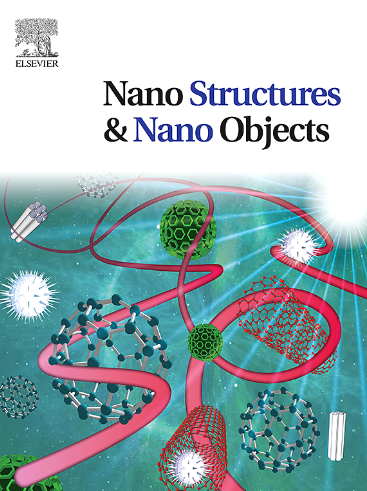Contact melting in bimetallic Cu-Ag nanolayer: Molecular dynamics simulation and fractal analysis
IF 5.45
Q1 Physics and Astronomy
引用次数: 0
Abstract
Contact melting (CM) is a constituent of a number of technologies, including soldering, sintering, and eutectic bonding. In particular, the chip-level bonding between electronic components may be noted. Our present paper shines a light on regularities and mechanisms of CM at the nanoscale. In our molecular dynamics experiments we simulated CM in a bimetallic Cu-Ag nanolayer using the embedded atom method. In particular, the kinetic dependencies of the potential term into the specific (per atom) internal energy, the sample sizes, the radial distribution function, and the volume concentration of both kinds of atoms were found to reveal and analyze sequential stages of CM. A special emphasis is made on employing the fractal dimension as an important and new descriptor of CM. A concept has been developed of the dynamic evaluation of the fractal dimension of instantaneous images of atomic configurations at all the stages of CM. A conclusion is made that kinetics of the fractal dimension and information entropy adequately reflects the growth of the conventional thermodynamic entropy during the CM process. The vacancy pore formation at the earliest stage of CM (before nucleation and growth of a liquid phase) was discovered thanks to employing, the Connolly algorithm used before to construct Connolly surfaces in organic materials only. Thus, for the first time, we observed a manifestation of the Kirkendall effect in the course of CM at the nanoscale.
双金属Cu-Ag纳米层的接触熔化:分子动力学模拟与分形分析
接触熔化(CM)是许多技术的组成部分,包括焊接、烧结和共晶键合。特别地,可以注意到电子元件之间的芯片级键合。本文揭示了纳米尺度CM的规律和机制。在我们的分子动力学实验中,我们用嵌入原子的方法模拟了双金属Cu-Ag纳米层中的CM。特别是,势能项与(每个原子)比内能、样品大小、径向分布函数和两种原子的体积浓度之间的动力学依赖关系揭示和分析了CM的顺序阶段。特别强调了将分形维数作为CM的一个重要的新描述符。本文提出了原子构型瞬时图像分形维数动态评价的概念。结果表明,分形维数和信息熵的动力学特征充分反映了常规热力学熵在CM过程中的增长。由于使用了之前仅在有机材料中构建Connolly表面的Connolly算法,发现了CM最早阶段(液相成核和生长之前)的空位孔形成。因此,我们首次在纳米尺度上观察到CM过程中Kirkendall效应的表现。
本文章由计算机程序翻译,如有差异,请以英文原文为准。
求助全文
约1分钟内获得全文
求助全文
来源期刊

Nano-Structures & Nano-Objects
Physics and Astronomy-Condensed Matter Physics
CiteScore
9.20
自引率
0.00%
发文量
60
审稿时长
22 days
期刊介绍:
Nano-Structures & Nano-Objects is a new journal devoted to all aspects of the synthesis and the properties of this new flourishing domain. The journal is devoted to novel architectures at the nano-level with an emphasis on new synthesis and characterization methods. The journal is focused on the objects rather than on their applications. However, the research for new applications of original nano-structures & nano-objects in various fields such as nano-electronics, energy conversion, catalysis, drug delivery and nano-medicine is also welcome. The scope of Nano-Structures & Nano-Objects involves: -Metal and alloy nanoparticles with complex nanostructures such as shape control, core-shell and dumbells -Oxide nanoparticles and nanostructures, with complex oxide/metal, oxide/surface and oxide /organic interfaces -Inorganic semi-conducting nanoparticles (quantum dots) with an emphasis on new phases, structures, shapes and complexity -Nanostructures involving molecular inorganic species such as nanoparticles of coordination compounds, molecular magnets, spin transition nanoparticles etc. or organic nano-objects, in particular for molecular electronics -Nanostructured materials such as nano-MOFs and nano-zeolites -Hetero-junctions between molecules and nano-objects, between different nano-objects & nanostructures or between nano-objects & nanostructures and surfaces -Methods of characterization specific of the nano size or adapted for the nano size such as X-ray and neutron scattering, light scattering, NMR, Raman, Plasmonics, near field microscopies, various TEM and SEM techniques, magnetic studies, etc .
 求助内容:
求助内容: 应助结果提醒方式:
应助结果提醒方式:


